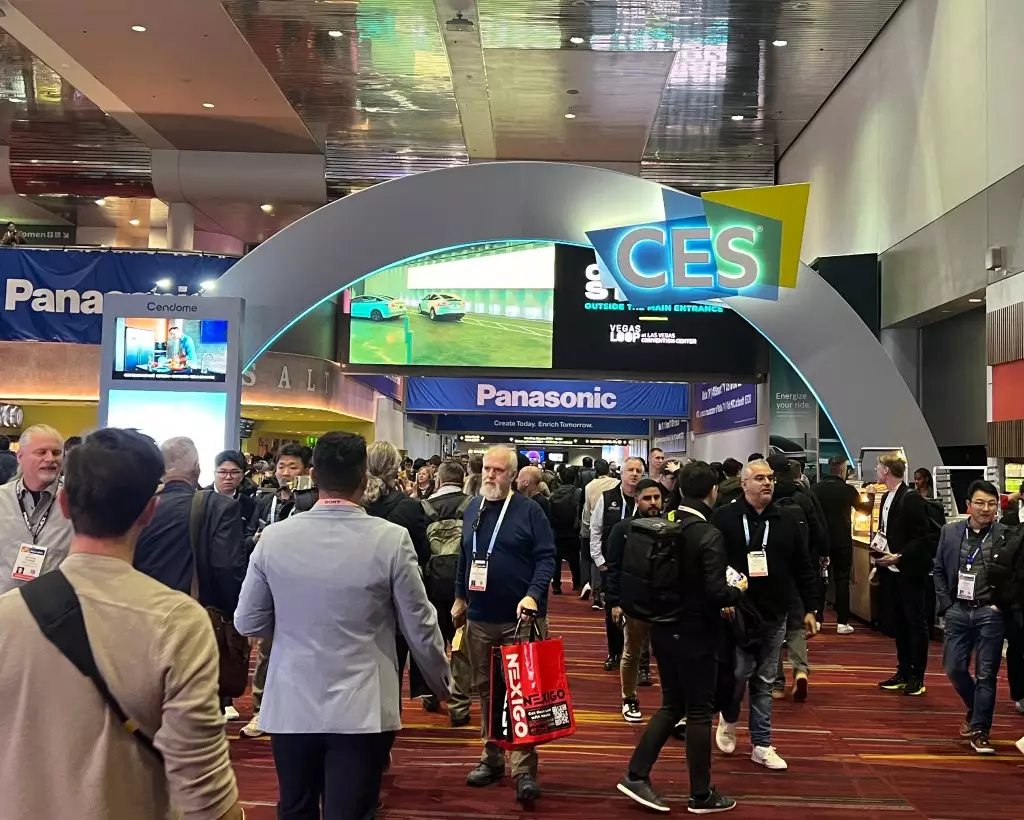The Consumer Electronics Show (CES) has evolved beyond its initial purpose of showcasing cutting-edge gadgets; it has transformed into a pivotal event where the realms of technology and entertainment converge. As the event kicks off in Las Vegas, the urgency is palpable among traditional media companies to adapt to the rapid technological advancements that shape their industry. In an era where theatrical box office revenues and linear television viewership are on the decline, the influence of technology offers a realm of hope and opportunities—albeit amid complexities that illustrate the growing divide between the tech world and Hollywood.
A Diverse Array of Participants
The CES landscape features significant presences from industry giants like Sony and Panasonic, whose massive booths are a testament to their ongoing relevance. Yet, what distinguishes this year’s event is the engagement of major entertainment players such as Disney, Warner Bros. Discovery, and SAG-AFTRA. These companies, alongside digital platform innovators like Amazon and Roku, strive to position themselves effectively in a changing landscape. Keynote speeches from influential leaders, such as the CEOs of SiriusXM and Nvidia, illustrate the event’s commitment to addressing the critical dialogues at the nexus of technology and media.
Nvidia, a tech firm that has gained meteoric success with a market cap soaring to $3.5 trillion, has shifted its image from a peripheral player to a central force within Hollywood. Its AI technology plays an increasingly vital role in animation, special effects, and other cinematic applications. This illustrates how traditional boundaries between industries are blurring, requiring all stakeholders to innovate continuously.
One of the notable discussions at CES 2023 is expected to center around streaming challenges and opportunities, a testament to the rapidly changing content consumption landscape. Executives from various powerhouse entities will gather at OpenAP’s Audience Summit to share insights on the current streaming environment. A focus on collaboration and learning to navigate these complex waters is likely to resonate with many conference attendees, echoing sentiments that traditional entities must evolve and adapt rather than cling to outdated models.
Michael Kassan, a notable figure in the media landscape with experience navigating high-stakes environments, will guide discussions. His previous departure from MediaLink serves as a reminder of the intricacies in partnerships and the importance of maintaining strategic alliances when pursuing growth in an unpredictable market.
Advertising in the Digital Age
As dollar flows shift from traditional advertising avenues to digital and streaming platforms, the theme of advertising has become more pronounced at CES. Mark Marshall, head of advertising for NBCUniversal, emphasized how CES functions as an unofficial kickoff for upfront conversations—the critical advance selling of advertising slots before the programming season begins. The stakes are high, of course, with NBCUniversal gearing up for a series of major events, all while attempting to set themselves apart with innovative strategies to drive engagement.
Conversely, Disney is positioning its Global Tech + Data Showcase as a cornerstone of its advertising strategy, showcasing how technological investment not only allows it to compete with emerging platforms but also leverages its immense content offerings. With a focus on sports—one of the last bastions of traditional viewership—Disney aims to enhance advertiser interest, capitalizing on the interplay between technology and engaging content.
As companies like Warner Bros. Discovery ramp up their branding efforts around digital platforms, the entertainment industry appears poised for a more collaborative future. Their activation is evident in the way they integrate sponsor promotions into their content, showcased through events like the “Taste of Thailand” party tied to a new season of HBO’s “White Lotus.”
Amid these transformations, organizations like SAG-AFTRA highlight challenges related to technological advancements, including AI’s impact on the labor market. Their focus on labor innovation and technology underscores the urgency of addressing these rapidly evolving concerns, explicitly linking them to ongoing negotiations and industry standards.
CES 2023 embodies the dynamic intersection of entertainment and technology, where opportunities abound but come with challenges that demand strategic foresight. As stakeholders engage in discussions about the future of media in this new terrain, the outlook appears promising for those ready to embrace change. With a keen focus on innovation, collaboration, and adaptation, the future may indeed hold significant potential for both industries—one where the fusion of technology and entertainment can thrive and evolve.

